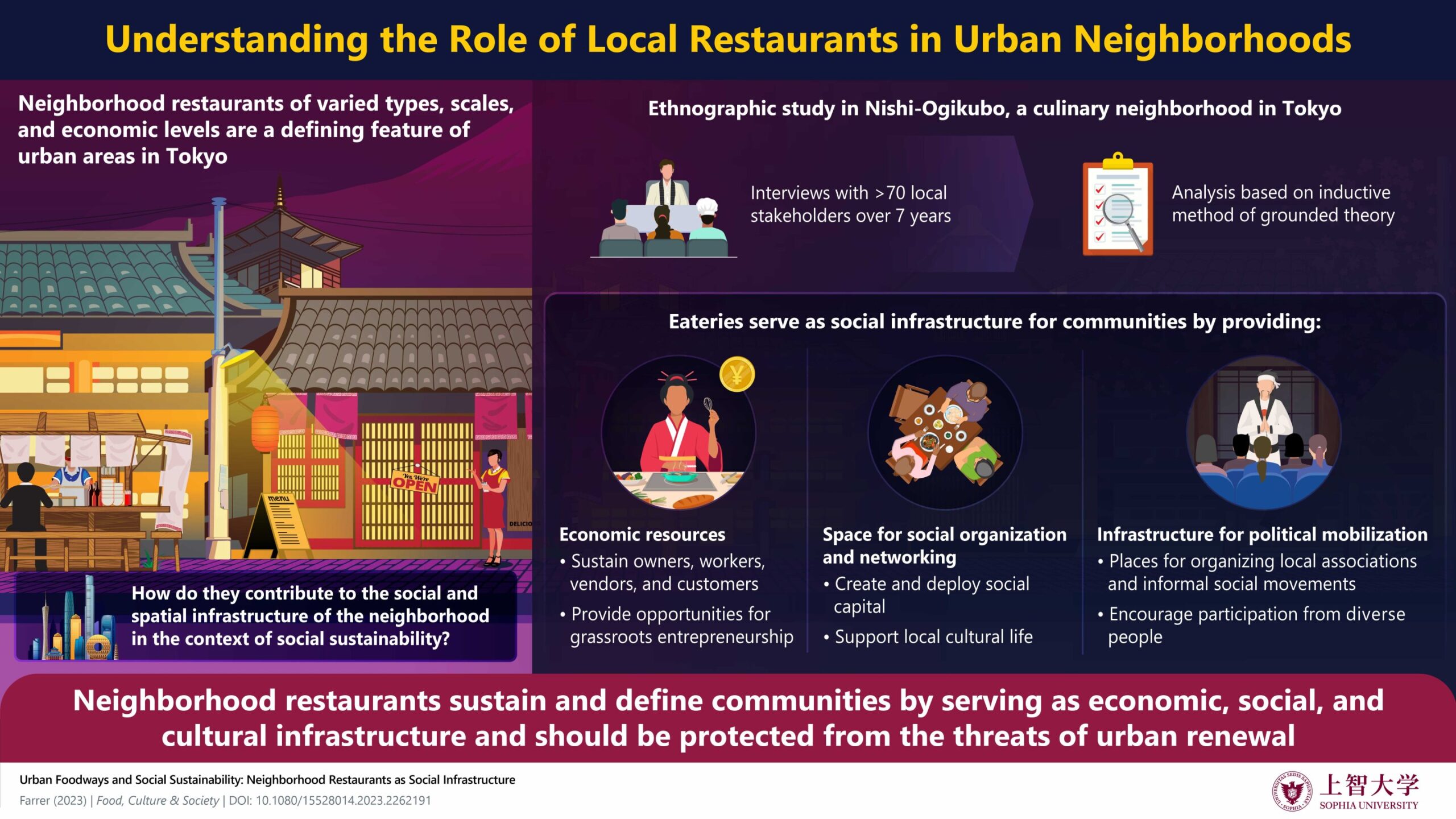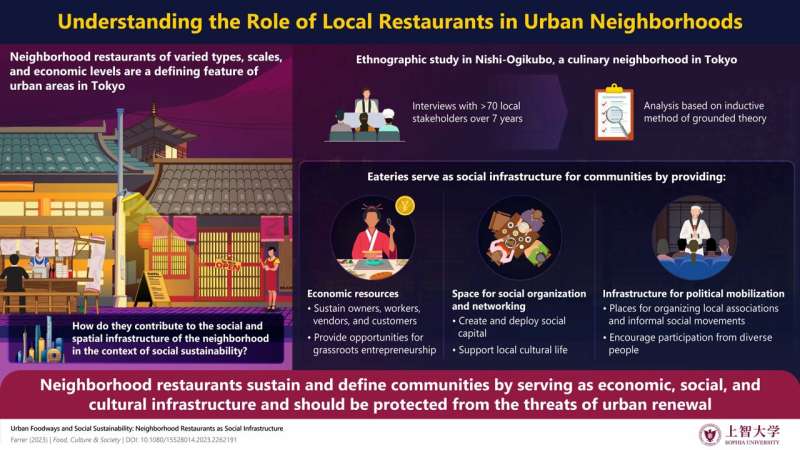

Studies on sustainability inevitably touch on food-related topics like food security, culinary heritage, and the sustenance of vulnerable people. Social sustainability is one of the three pillars of sustainability, alongside environmental and economic sustainability, and has become a pivotal topic in various research fields. It includes concerns about social justice, resource distribution and recognition, and political participation of marginalized groups at the local community level.
Very few studies of social sustainability have looked at urban foodways in terms of social and cultural infrastructure. More often than not, scholars in Japan have been concerned with how communities preserve culinary heritage, including traditional foods and eateries, especially in the face of globalization and modernization. In short, the question has been one of how communities preserve their foodways.
But what if we flipped the question? In a recent study published in Food, Culture & Society, Professor James Farrer of Sophia University, Japan, did this precisely by focusing on how commercial foodways (as spots for social interaction and integration) help sustain their communities.
To this end, he undertook an ethnographic investigation in Nishi–Ogikubo (also known as “Nishiogi”), a culinary neighborhood in Tokyo, home to a high density of small eateries.
The idea was to understand how independent restaurants in this busy neighborhood support community life, particularly when redevelopment and corporatization are destroying these aspects of city life. “In Tokyo, I observed that neighborhood restaurants, particularly small independent restaurants, serve as social infrastructure for communities. Beyond grabbing a meal and helping someone make a living, they also serve to support the social and cultural life of the community in important ways,” explains Prof. Farrer.
Prof. Farrer considered Nishiogi, a single neighborhood in Suginami district, as the study’s unit of analysis to generate insights that could be extended to the rest of Tokyo and other cities of the world. To gather information for his qualitative analyses, he focused on multiple small-scale and independently-owned restaurants in Nishiogi over the course of seven years.
With the help of research assistants, Prof. Farrer interviewed over 70 stakeholders in the community, including business owners and local realtors.
After a comprehensive analysis of all the gathered data, Prof. Farrer arrived at some important conclusions about the role of neighborhood eateries with respect to social sustainability. First, he observed that eateries in Nishiogi are an important economic resource for employers, workers, and customers.
These places serve as a source of livelihood not only for dozens of Japanese families but also for migrants from around the world. Notably, neighborhood restaurants proved to be an effective entry point for low-resource people, including disadvantaged minorities, single mothers, and youth, into business ownership.
Second, neighborhood eateries provide a space for social organization, integration, and networking, making it possible to create and deploy social capital. By enabling customers and workers to form new social ties, the community becomes more tightly knit, which is helpful from the point of view of social sustainability. For example, social ties and capital established can serve as a safety net for vulnerable patrons or crises like the COVID-19 pandemic.
Third, the study revealed that eateries can become important spaces for political mobilization. This includes not only formal movements like merchant associations but also diverse informal social movements and activism addressing local causes and issues. Interestingly, because eateries now play an important role in generating social capital, customers become central to these movements, with diverse people like women, youngsters, and newcomers getting involved in decision-making.
In summary, these findings suggest that small neighborhood eateries, especially local and independently owned ones, can be instrumental in fostering social sustainability and cohesion. Protecting them from the threats of urbanization is, therefore, essential.
“It is important for Tokyo urban planners and citizen groups to understand how neighborhood eateries serve as social infrastructure, particularly the role of independent restaurants in supporting the community economically, socially, and politically. This is because with rapid urban redevelopment, aging, and the rise of corporate restaurant chains, Tokyo is at risk of losing this social infrastructure,” adds Prof. Farrer.
More information:
James Farrer, Urban foodways and social sustainability: neighborhood restaurants as social infrastructure, Food, Culture & Society (2023). DOI: 10.1080/15528014.2023.2262191
Provided by
Sophia University
Citation:
Nourishing communities: Neighborhood restaurants as social infrastructure (2023, December 13)
retrieved 13 December 2023
from https://phys.org/news/2023-12-nourishing-communities-neighborhood-restaurants-social.html
This document is subject to copyright. Apart from any fair dealing for the purpose of private study or research, no
part may be reproduced without the written permission. The content is provided for information purposes only.

